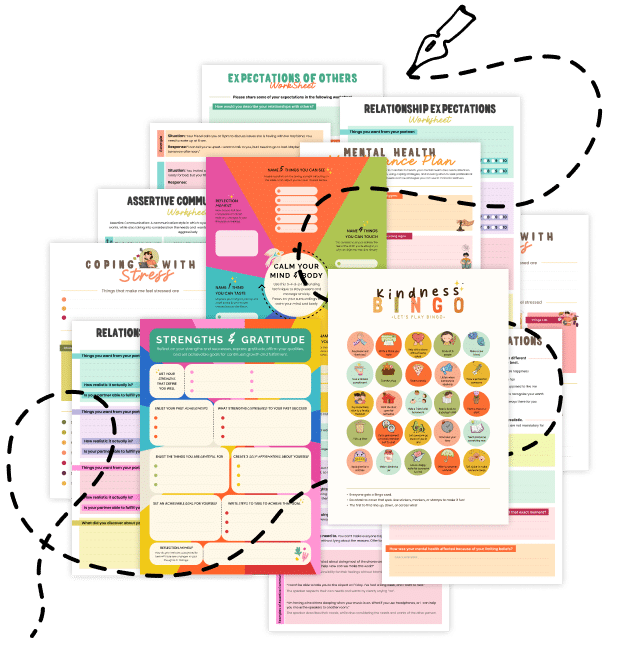20 Things You Should Know About Affective Labeling
Enhance your emotional regulation and self-awareness by exploring these 20 insights on Affective Labeling—what it is, why it matters, and how labeling your emotions can help you process feelings more effectively. Discover how putting your emotions into words can reduce stress, improve decision-making, and foster a deeper understanding of yourself.
1. What Is Affective Labeling?
Affective labeling is the practice of identifying and verbalizing your emotional state, which can help reduce the intensity of negative emotions and foster clarity.
2. A Tool for Emotional Regulation
Labeling emotions has been shown to dampen the brain’s emotional response, making it easier to manage stress and anxiety.
3. Reducing Amygdala Activity
Research indicates that putting your feelings into words can decrease activity in the amygdala—the brain region involved in processing fear and stress.
4. Enhancing Self-Awareness
By naming your emotions, you gain insight into your internal experiences, helping you understand what triggers certain feelings.
5. Improving Decision-Making
When you clearly identify your emotions, you can make more informed and balanced decisions rather than acting impulsively.
6. Bridging Intuition and Analysis
Affective labeling helps create a bridge between emotional intuition and rational thought, leading to a more integrated approach to problem-solving.
7. Facilitating Cognitive Processing
Expressing emotions in words allows the brain to process and integrate emotional experiences more effectively.
8. A Mindfulness Practice
Affective labeling is often used in mindfulness and meditation practices, encouraging you to observe your feelings without judgment.
9. Enhancing Communication Skills
Being able to articulate your emotions improves your communication with others, fostering better relationships and support.
10. Reducing Emotional Overwhelm
By labeling what you feel, you can break down complex emotions into manageable components, reducing the feeling of being overwhelmed.
11. Promoting Psychological Resilience
A clear understanding of your emotional landscape builds resilience, enabling you to bounce back more effectively from setbacks.
12. Helping to Identify Patterns
Regular affective labeling can reveal recurring emotional patterns, offering clues about what triggers stress or joy in your life.
13. Supporting Therapy and Counseling
Therapists often encourage affective labeling as a way to help clients process their feelings and develop healthier coping strategies.
14. A Step Toward Self-Compassion
Naming your emotions can lead to greater self-compassion, as you learn to accept your feelings without harsh self-judgment.
15. Enhancing Memory of Emotional Events
When you label your emotions, you create additional memory cues, which can help you recall and reflect on past experiences more accurately.
16. Encouraging Emotional Vocabulary Expansion
Regular practice of affective labeling helps expand your emotional vocabulary, enabling you to express your feelings with greater nuance.
17. Lowering the Impact of Negative Emotions
By acknowledging and naming negative emotions, you may reduce their intensity and decrease their hold on your behavior.
18. Supporting Emotional Intelligence
Affective labeling is a key component of emotional intelligence, fostering skills like empathy, self-regulation, and effective communication.
19. Integrating with Journaling
Incorporating affective labeling into journaling routines can enhance self-reflection and provide insights into your emotional patterns over time.
20. Related Topics to Explore
- Emotional Granularity – Learn to differentiate subtle emotional states for deeper self-understanding.
- Cognitive Defusion – Explore techniques to detach from unhelpful thoughts and emotions.
- Interoceptive Awareness – Enhance your sensitivity to bodily signals associated with emotions.
- Mindful Acceptance – Embrace your feelings without judgment to foster greater peace.
- Self-Compassion Training – Develop a kind and nurturing inner dialogue to support emotional well-being.
Quick Tips to Boost Your Affective Labeling
- Practice Regularly: Set aside a few minutes each day to label your emotions, either through journaling or verbal reflection.
- Use an Emotion Wheel: Utilize tools like an emotion wheel to expand your vocabulary and precisely identify your feelings.
- Reflect Before Reacting: When emotions run high, pause to label what you’re experiencing before responding.
- Discuss Your Emotions: Share your feelings with a trusted friend or therapist to gain new perspectives and support.
- Combine with Mindfulness: Integrate affective labeling into your mindfulness practice to enhance present-moment awareness and emotional balance.
Embrace these insights and tips to harness the power of Affective Labeling, empowering you to process emotions more effectively and cultivate a deeper understanding of your inner world!


